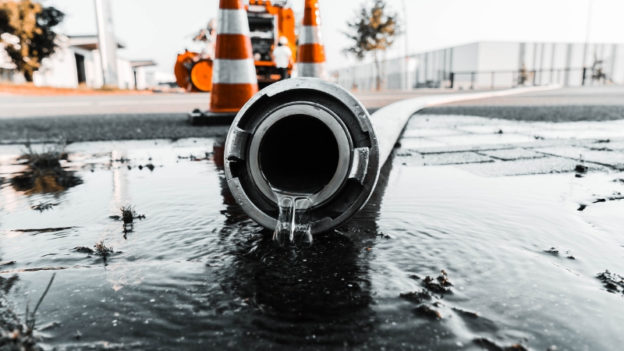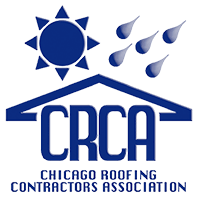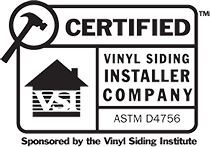If you live in a particularly wet area or simply have a leaking issue that you need fixing, you’re probably already aware how stressful finding the right solution is.
Thankfully – all is not lost. In this article, we’re going to look at some of the issues surrounding roof leaks, as well as some key solutions.
So if you want to know what to do when your roof leaks and how to find a leak and potentially fix it yourself – keep reading.
What to do when your roof leaks – Inspect the roof yourself
 If you first think you’ve got a roof leakage problem – you need to find out how serious the problem is and make a decision as to whether you can fix it yourself. Thankfully, some minor roof leaks shouldn’t be too difficult to fix with the right tools. So let’s have a look at how to inspect the roof yourself:
If you first think you’ve got a roof leakage problem – you need to find out how serious the problem is and make a decision as to whether you can fix it yourself. Thankfully, some minor roof leaks shouldn’t be too difficult to fix with the right tools. So let’s have a look at how to inspect the roof yourself:
The first step is obvious – you need to get up into your roof and have a look around. While some major leaks will start showing through your house and into your rooms, you don’t want to let it get to that stage. Many smaller leaking issues will only show in the roof cavity or loft area, so get up and have a look around.
Remember: keep safety as your number one priority. Make sure the roof cavity area is well-lit (this will help you spot any problems much more easily as well). Wear the right protective equipment and don’t stand anywhere unsafe.
It might be a good idea to start inspecting your roof when it’s raining, so you’ll see where water is entering your building – and how much. If this isn’t possible, try setting up an unmanned hose to fire water at your roof, or get someone to hold it while you inspect inside. If you have things stored in your loft area that you don’t want to get wet during these tests, you might want to clear the area first.
One problem with finding the leak yourself is that there often might not even be visible drips from actual holes. You may find puddles or spillage in areas that aren’t right next to the roof holes.
In other words, water can slowly collect and build up from small trickles and leaks that are hard to actually spot. One tip is to try and think like the water, and follow any small streams and drips to find the main source. If the drip is already coming through into your main home, you can start your inspection right there and follow the stream to its source in the roof, hopefully.
If you’re having any trouble with this step, you might want to hire a professional to come in and help you. They’ve normally got much more experience finding roof issues than you might have, so it should be reasonably straightforward for them to help.
See if there are any small-scale repairs you can do
![]() While major leaking problems will normally need a professional roofing company to help with, there might be some small things you can do to fix minor leaks yourself. First things first – put buckets in affected areas to catch drips while you work. Protect your furniture and carpets as well as possible.
While major leaking problems will normally need a professional roofing company to help with, there might be some small things you can do to fix minor leaks yourself. First things first – put buckets in affected areas to catch drips while you work. Protect your furniture and carpets as well as possible.
Your ability to fix a leak might depend on the type of roof you’ve got installed. Shingles, slates and metal roofs will all have different features that might need specialist knowledge before you can fix them. If you’re unsure, consult an expert.
To cover a leaking section of your roof, you can roll out heavy polyethylene sheeting and fix it externally to affected areas. Be aware that this should only be a temporary measure before a more sustainable solution is found.
If you know where a specific hole is causing a leak, you might also be able to fix it by securing a piece of galvanized sheet metal flashing to your roof. You need to be sure that fixing the roof yourself is going to work – and you need to be careful. Working on roofs can be dangerous, so you’ll need to be extra careful and make sure you’ve got all the right equipment.
Consult an expert
If you’re unsure about your roof leak or how to fix it, consult an expert. Don’t take risks and try and fix the roof yourself unless you’re both sure you can do a good job to your roof, and you’re sure you can work safely on top of it.

There should be some good roofing firms in your area that you can talk to. Some will offer free consultations and competitive quotes.
What options are available?
Depending on the type of roof and how badly damaged it is, there might be a number of options available. You’ll find this out by consulting an industry expert. You might need to tear off your roof and have a new one installed, or there might be relaying options as well as specific spot-fixes. Make sure you get a good idea of exactly what’s necessary.
You might want to speak to a couple of different firms to get a range of opinions.
How much might it cost?
Before you hire someone to complete the job, you need to make sure you know how much it’s going to cost. This will depend on what sort of roof it is, the area you live in, how damaged it is and how hard it is to access. Don’t simply go with the first quote as you might be able to find a better price by shopping around. Just remember – don’t just go for the cheapest option. Go for the best.
Check if you’re still under warranty
If you recently had your roof installed or repaired – you might still be under warranty. Many reputable roofing firms will guarantee their work for a number of years. That means if you’ve got an issue, you might be able to get it fixed for free.
Check your insurance
Roof issues like leakage could be covered by your home insurance, so they might be able to take care of the costs. Check the smallprint of your policies and phone them up if you have to.
Hopefully, you now know a bit more about what to do if you roof leaks. If you’re unsure, reach out to a roofing specialist and they might be able to help you.












